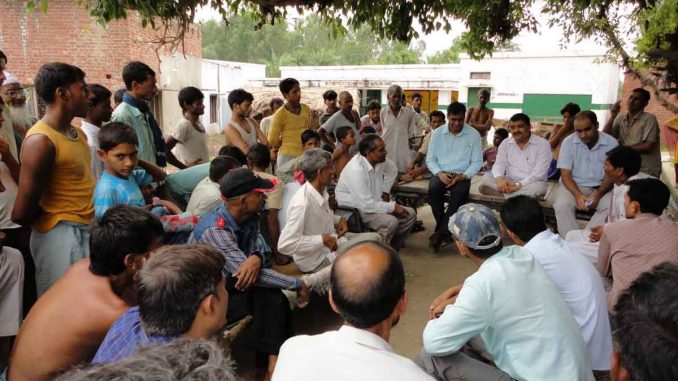
By Suvojit Chattopadhyay
‘Gram sabhas’ have ceased to be vibrant spaces for popular participation and effective agencies to hold government functionaries to account
Decentralization is a strategy to empower citizens to control their own destinies. At its core, decentralization signals that citizen collectives can come together to make decisions of allocation and expenditure of public resources. ‘Democratic decentralization’, as practised in India, is where this power is devolved to elected local governments—this was the spirit of the 73rd and 74th amendments to the Constitution in 1992-93.
This form of decentralization sought to break away from the conventional planning processes that did not involve citizens. Bringing about reforms in such a context required a ‘big bang’—of the kind attempted in Kerala, where, in 1996, instead of waiting to gradually create and upgrade the administrative capacity of the local government officials and elected representatives, the state government decided to devolve untied funds. The assumption was that these funds would trigger a wave of local accountability. The devolution was accompanied by a state-wide people’s campaign to mobilize people to participate in local governance.
In the democratic decentralization system, gram sabhas were envisaged as key platforms for popular participation. A quorum was defined for convening a meeting, and they had to develop by-laws that specified the number of times they were to meet in a year. Gram sabhas were responsible for catalysing local planning by conducting ‘needs assessment’ exercises, and devising plans for development projects that would be aggregated at the panchayat level. When further aggregated and rationalized at the district level, these would become official inputs into the state government’s annual budgeting process.
This highlights the importance of the gram sabha as a pivotal institution in local planning. However, 25 years since the landmark constitutional amendments, their state is quite different in reality. With low participation, and frequent hijacking by small but influential interests, gram sabhas have struggled to stay relevant. The dip in popular participation has had significant implications for the future of democratic decentralization in India. It is therefore important to take urgent steps to revive the humble institution.
1. There is a widely shared perception that gram sabhas are only for discussions on benefits from individually-targeted government schemes, and the planning process is seen merely as an exercise in identifying beneficiaries for these schemes. This needs to be countered by running a widespread awareness campaign where the development agenda of local governments, and the role of gram sabhas, is clarified.
2. There is a significant imbalance of power between local government officials and gram sabha members. Government officials are supposed to attend key gram sabhas, and communicate how projects and schemes under their jurisdiction are relevant to communities. The active participation of these officials, and a clear demonstration that gram sabha decisions cannot be simply overruled by the local bureaucracy, would be an important factor in restoring trust. For instance, administrative sanctions for scheme implementation should not take place without authorization at the gram sabha level.
3. There is a perception of rampant corruption by local leaders and elected representatives. The quantum of funds that flow through local governments, and the reports of misuse, add to this suspicion, or at least strengthens the perception that local governments are unable to ensure clean effective spending. Local accountability should be the central theme that binds every gram sabha. An active state government, acting as a watchdog, should complement the role of popular participation, and put pressure on local governments and government officials operating at the grass roots, from both above and below.
4. In most parts of the country, self-help groups have put down strong roots. In Kerala, the Kudumbashree model has demonstrated how these groups can interact with local government, strengthening, as a result, the spirit of local governance.
5. Finally, when it comes to gram sabhas, one size does not fit all—not all gram sabhas care about service delivery issues; there might be ones whose primary concern is the quality of tertiary health, or educational institutes, or job creation.
The functioning of gram sabhas is affected by the manner in which agendas are framed for public meetings, and the levels of involvement of critical actors such as elected representatives, government officials and subject experts. It is evident that there is very little scrutiny of the local governments by the state government. This calls for a more active role from the state government in reforming the organization and the conduct of gram sabhas to improve popular participation. This would form the basis for state governments and civil society to hold gram sabhas and the local government accountable for the delivery of public services.
In the techno-managerial framework of development, local governments have become contractors who just implement schemes designed and funded by those above them. In this process, gram sabhas have lost their ability to function as vibrant spaces for popular participation, as well as the ability to function as effective agencies to hold government functionaries to account. It is this space that gram sabhas need to regain if the goals of democratic decentralization are to be realized.
Suvojit Chattopadhyay works on issues of governance and development in South Asia.
Source: Livemint

Leave a Reply